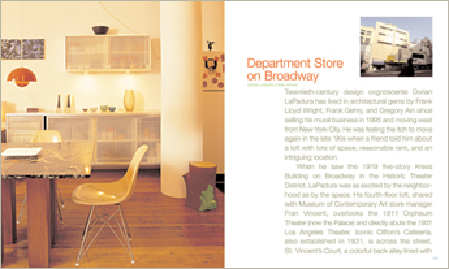Graphics Reference
In-Depth Information
CONTENT IS ALWAYS
different and always changing, and an asymmetrical approach allows a de-
signer to be flexible, to address the spatial needs of the content, and to create visual relationships
between different items based on their spatial qualities. The horizon line in the room, the vertical
column, the red headline, the text on the page, and the smaller inset photograph all respond to
each other's sizes, color, and location; the negative spaces around them all talk to each other.
ThinkStudio
United States
Seeing Form and Space
Categories of Form
Putting Stuff Into Space
Compositional Strategies
A Foundation for Meaning
Symmetry and Asymmetry
The result of making all the proportions between and
around form elements in a composition different is that the possibility of symmetry is
minimized. Symmetry is a compositional state in which the arrangement of forms re-
sponds to the central axis of the format (either the horizontal axis or the vertical axis);
the forms might also be arranged in relation to each other's central axes. Symmetrical
arrangements mean that some set of spaces around the forms—or the contours of the
forms around the axis—will be equal, which means that they are also static, or rest-
ful. The restfulness inherent in symmetry can be problematic relative to the goals of
designed communication. Without differences in proportion to compare, the viewer is
likely to gloss over material and come to an intellectual rest quickly, rather than invest-
igate a work more intently. If the viewer loses interest because the visual presentation of









